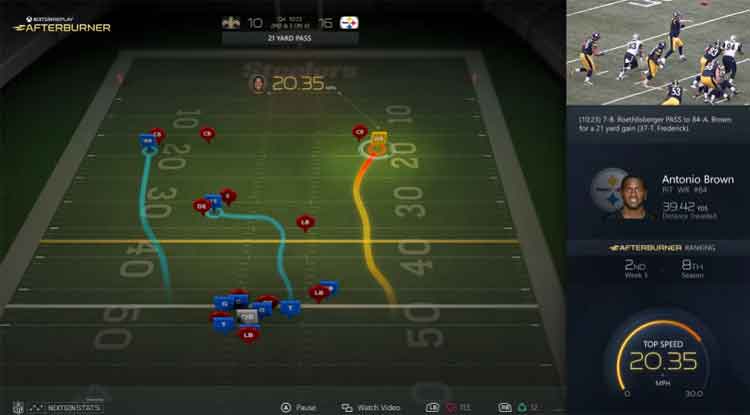When most supply chain professionals think about RFID, their minds might drift towards the famous (infamous?) Walmart RFID mandate of sorts announced in 2003, or perhaps RFID’s use in automated toll systems.
Supply Chain Digest Says... |
 |
| Here’s another example: statistics on just how hard a practice session is based player load, exertion, speed, and sustained speed. |
 |
What do you say? |
| Click here to send us your comments |
 |
| Click here to see reader feedback |
| |
|
|
Neither example would rate very high on the fun meter.
But RFID and the National Football League? That might generate some real interest.
It turns out that RFID has revolutionized the capture of statistics and the analysis of that data in with the NFL hefascinating new ways.
RFID technology is being used to track player movement and action on the field in ways very different that common stats such as yards per carry or quarterback rating scores.
A few years ago, Zebra Technologies made a proposal to the NFL to deploy an RFID system across the league, moving ahead after it was accepted with a reader network at each stadium NFL teams play at in the US and even some international ones, such as for the games played each year in London.
According to a recent article in Popular Mechanics magazine, players are equipped with two RFID tags, one on each shoulder between layers of pads worn there. The tags are about the size of a nickel, with batteries that can last an entire NFL season.
For down linemen on offense and defense, another tag is placed in the middle of the shoulder pads on the back.
There are also tags inside the footballs, which was a tricky engineering proposition, with concerns about added weight and potential impact on flight or rotation of the ball. In the end, the design involved having the tag suspended in the bladder on the side opposite the valve where the ball is inflated.
The RFID tag used in the ball is also higher-frequency, at 25 hertz per second, than the ones used for the players, at 12 hertz per second, enabling measurement of metrics such as rotation speed, velocity, and acceleration.
(See More Below)
|
CATEGORY SPONSOR: SOFTEON |
|
|
| |
|
|
Players were first outfitted with the tags in the 2014 season.
The first balls to have RFID tags were deployed in the 2016 preseason and on Thursday Night Football. Then in 2017, every game ball had the tag too.
 To manage the process, the League created what it calls Next-Gen Stats, offering data in real time based on player (and football) tracking on the field, as well as for later analysis. To manage the process, the League created what it calls Next-Gen Stats, offering data in real time based on player (and football) tracking on the field, as well as for later analysis.
The system tracks player movement as well as the movement of the ball, with the potential for more than 260 data points for every play during the game, all collected in real time.
The result is a huge amount of data, so much so that for a while, the NFL limited data sharing for a specific game to the two teams playing. But now, every team gets next-gen stats on every game.
Use of the data is only limited by the imagination. The Popular Mechanics article cited a recent play by the Seattle Seahawks wide receiver D.K. Metcalf, who tracked down a safety from the Phoenix Cardinals that appeared headed for a touchdown after an interception. But Metcalf, who was running on the opposite side of the field, got to him first.
Within a couple of minutes, NFL stats said Metcalf covered a total of 114.8 yards during the play, reaching a top speed of 22.64 mph.
Here’s another example: statistics on just how hard a practice session is based player load, exertion, speed, and sustained speed.
The data is also being use to improve football video games, in part by making them more realistic.
And the NFL is working to add data capture by cameras, such as where a player’s limbs are as well as skeletal alignment when they are are running or jumping.
“I’m confident that a combination of cameras and RFI solutions can get even more data,” Matt Swensson, head of products and technology for NFL Media, told Popular Mechanics.
Any reaction to the NFL and RFID? Let us know your thoughts at the Feedback button below.
Your Comments/Feedback
|